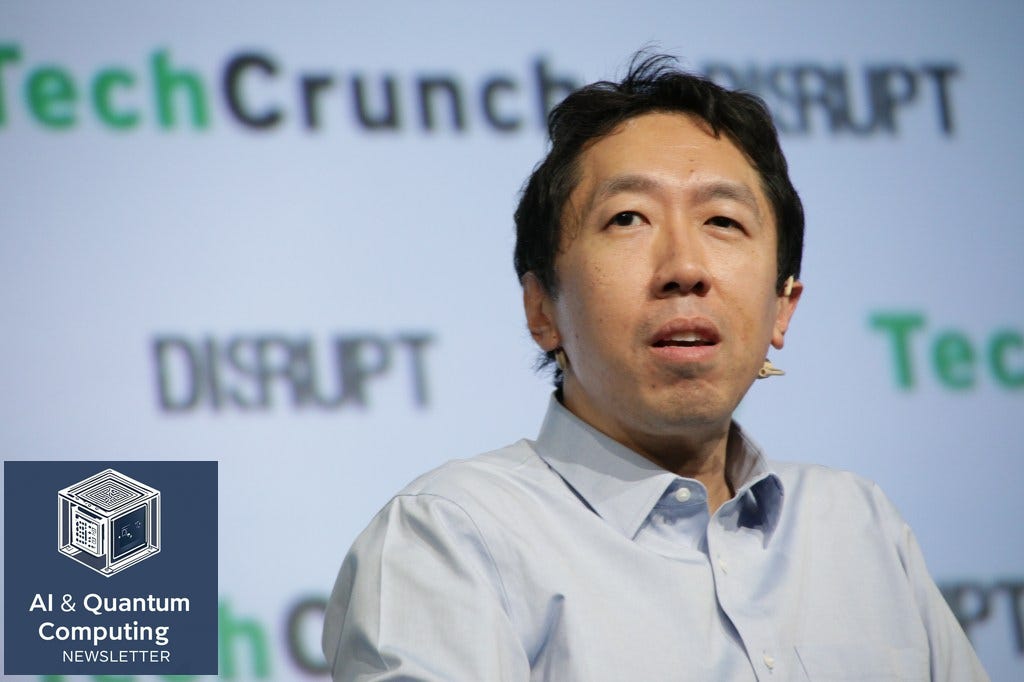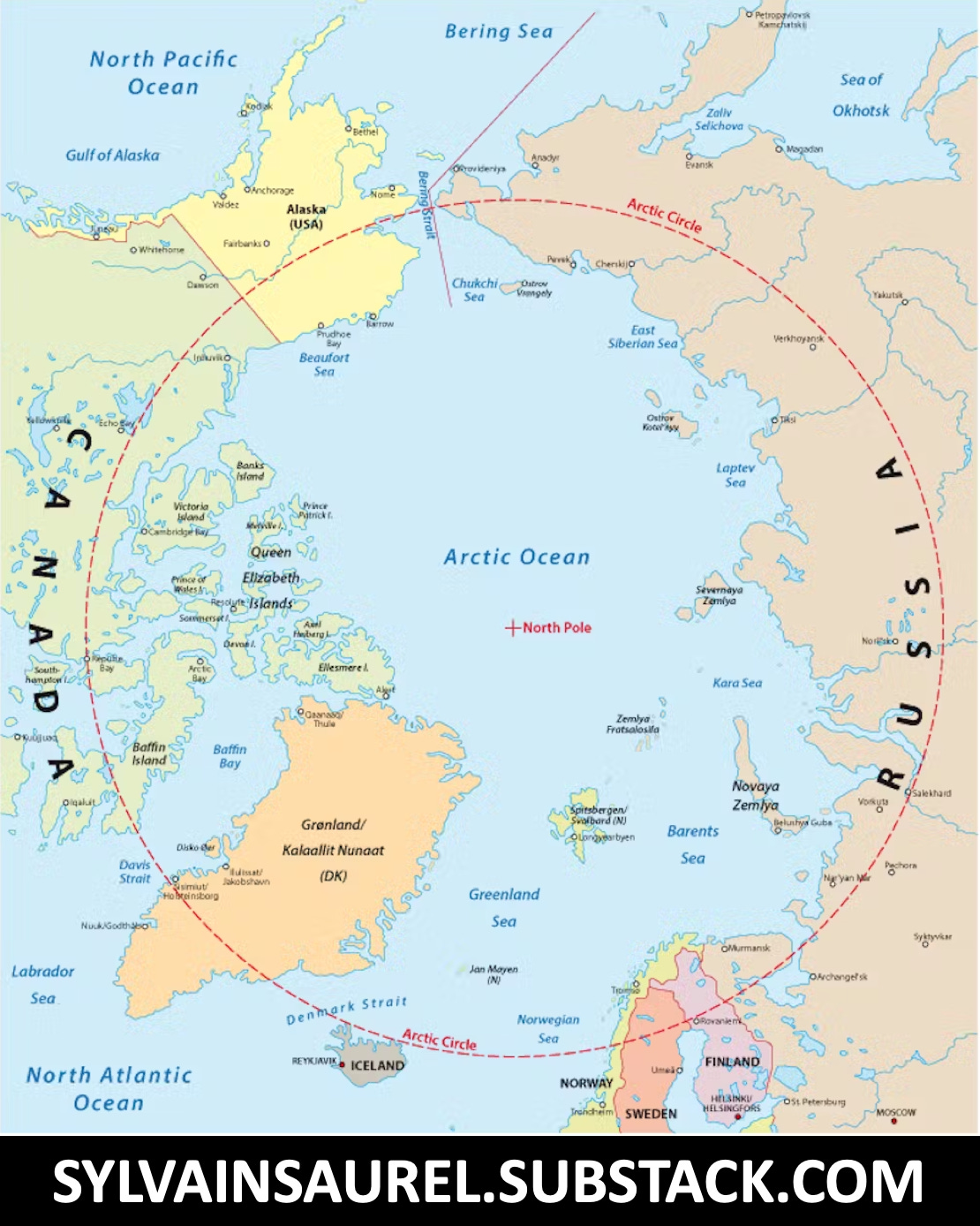The AI Oracle Has Spoken: Andrew Ng's 5 Predictions That Will Mint the Next Generation of Millionaires.
The next generation of millionaires won’t be the ones who build the biggest AI model.
When Andrew Ng makes a prediction, the world of technology holds its breath. This isn’t just another pundit shouting into the void. This is the man who saw the Deep Learning revolution coming in 2008, long before it became a household term. He anticipated the online education boom, co-founding Coursera in 2011 and transforming how millions learn. In 2014, he forecasted China’s meteoric rise to become an AI superpower. His track record isn’t just impressive; it’s prophetic.
As the architect of Google Brain, the former head of AI for Baidu, and the mentor to over 8 million students worldwide, Ng possesses a unique vantage point over the entire technological landscape. His AI Fund, backed by $370 million, isn’t just placing bets; it’s shaping the future.
Now, Ng has unveiled a new set of predictions—five seismic shifts that he believes will create more wealth and opportunity than any technological wave before them. This isn’t about chasing the hype of ever-larger models or the distant dream of artificial general intelligence. It’s a pragmatic, actionable roadmap for entrepreneurs, engineers, and investors. Forget everything you think you know about the AI race. The game has changed, and Andrew Ng has just handed us the new rulebook.
The Future of Bitcoin: The Shadow of a $20 Trillion Flaw.
Will Bitcoin die in two halvings?
1. The End of the AI Arms Race: Agentic AI Will Triumph Over Giant Models
For the past several years, the AI narrative has been dominated by a brute-force arms race. The prevailing wisdom was simple: bigger is better. Companies poured billions into training colossal Large Language Models (LLMs), believing that scale was the only path to superiority. Ng argues this era is coming to a close. The future isn’t about building a bigger hammer; it’s about creating a team of intelligent, autonomous craftsmen.
Enter Agentic AI.
The agentic AI market is projected to explode from $5.1 billion to a staggering $69 billion by 2032—a 13-fold increase in just seven years. This isn’t just growth; it’s a paradigm shift. An agentic workflow transforms a passive, predictive model into an active, problem-solving system. Instead of simply answering a question, an agentic AI can take a complex goal, break it down, use tools, critique its own work, and even collaborate with other agents to achieve its objective.
Ng has identified four key design patterns that are making this revolution possible:
Reflection: The AI model is engineered to review and improve its own outputs critically. It asks itself, “Is this the best way to do this? Could this be more accurate? What did I miss?” This iterative self-correction dramatically enhances quality and reliability.
Tool Use: The AI is no longer confined to its internal knowledge. It can access and utilize external tools—connecting to APIs, running code, searching databases, or browsing the web. This allows a relatively small model to leverage the power of the entire digital ecosystem.
Planning: Faced with a complex task, the agentic system deconstructs it into a sequence of smaller, manageable sub-tasks. It creates a strategic plan, executes it step-by-step, and adapts as it goes, mimicking high-level human reasoning.
Multi-Agent Collaboration: Instead of one monolithic model trying to do everything, multiple specialized AI agents work together. A “researcher” agent might gather information, a “writer” agent might draft a report, and a “critic” agent might review it for errors, all collaborating seamlessly.
The proof is already in the pudding. Ng points to a revolutionary finding where smaller, cheaper models, when orchestrated within these agentic workflows, consistently outperform giant, monolithic models like GPT-4. Financial titan JPMorgan Chase has already implemented these principles, slashing operational costs in some departments by a remarkable 30%.
How to Prepare: Shift your focus from model training to workflow architecture. The million-dollar opportunity lies not in building the next foundation model, but in designing and deploying clever agentic systems that use existing, often smaller, models to solve complex business problems.
2. The Uncomfortable Truth: Military AI is the New Gold Rush
In a move that sent ripples through a hesitant Silicon Valley, Andrew Ng made a startling declaration in February 2025: “I’m glad Google changed its stance on AI weapons.” This wasn’t a casual remark. It was a clear signal that one of the most ethically-minded leaders in AI sees the defense sector as a critical, unavoidable, and explosive area for innovation.
While the notion of autonomous weapons is fraught with ethical peril, the reality is that the “military AI gold rush” is already underway. This extends far beyond lethal applications. Ng’s own portfolio companies are developing autonomous drones that are saving lives through rapid reconnaissance in disaster zones and providing secure logistics to remote troops.
The opportunities are vast: AI-powered threat detection, predictive maintenance for sophisticated hardware, secure communication networks, advanced simulation and training, and logistical optimization on a scale never before possible. The investment from governments worldwide is pouring in, creating an ecosystem ripe for startups that can deliver robust, reliable, and cutting-edge AI solutions.
How to Prepare: Entrepreneurs should investigate “dual-use” technologies. An AI system designed for optimizing a commercial supply chain can be adapted for military logistics. A computer vision model for industrial inspection can be repurposed for equipment maintenance on naval vessels. The key is to build foundational technologies with applications in both civilian and defense sectors, opening up a massive, well-funded market that many are too timid to enter.
3. The Pragmatist’s Fortune: AGI is Decades Away, Solve Boring Problems Now
The tech world is obsessed with the quest for Artificial General Intelligence (AGI)—a hypothetical AI with the cognitive abilities of a human. This pursuit has consumed billions in research and fueled endless media hype. Ng’s advice? Ignore it.
He offers a brilliantly simple test for the arrival of AGI: “Until companies fire ALL their intellectual workers, AGI hasn’t arrived.”
This isn’t cynicism; it’s a call for pragmatism. The path to immense profitability isn’t in chasing a distant, sci-fi dream. It’s in identifying and solving the “boring,” unglamorous, yet enormously valuable problems that plague every industry today. His companies focus on tangible results—automating document processing, optimizing energy consumption, improving medical diagnostic accuracy, and streamlining manufacturing floors.
These applications don’t make headlines about the singularity, but they generate billions in value by increasing efficiency, reducing errors, and cutting costs. This is where the real money is being made in AI, right now.
How to Prepare: Conduct a “friction audit” of your industry. Where are the bottlenecks? What repetitive, data-intensive tasks consume the most man-hours? What processes are most prone to human error? These are your targets. Build or deploy narrow AI solutions that solve these specific, high-cost problems. The return on investment is direct, measurable, and massive.
4. The Eastern Dragon’s New Fire: China Will Dominate Through Open-Source
For years, the U.S. has led the AI race through its massive, proprietary foundation models. But Ng sees a new path to dominance emerging from the East, and it’s not based on outspending America. “There’s now a path for China to surpass the U.S. in AI,” he states, clarifying that this path is paved with open-source models and lightning-fast iteration.
Chinese tech firms are releasing a torrent of powerful, open-source AI models that are remarkably capable and, crucially, dramatically cheaper to run. Smart founders and developers globally are already leveraging these models at what Ng estimates to be 1/10th the cost of their American counterparts.
This strategy changes the entire competitive landscape. It democratizes access to powerful AI, fostering a vast global ecosystem of developers building on top of Chinese technology. While American companies build walled gardens, China is providing the seeds for a global forest, allowing them to benefit from the innovation of millions of developers worldwide. Their advantage isn’t size; it’s speed and accessibility.
How to Prepare: Shed any “not-invented-here” syndrome. Actively explore and experiment with leading open-source models, regardless of their origin. By building on these cost-effective and rapidly improving foundations, startups can operate with a leaner burn rate, ship products faster, and out-maneuver competitors locked into expensive, proprietary API contracts.
5. The Revolution in Your Pocket: Small Models, Massive Impact
The final piece of Ng’s vision is perhaps the most tangible: the unstoppable rise of Small Language Models (SLMs) and edge computing. The era of AI being exclusively chained to the cloud is over.
The SLM market is set to grow from $930 million to $5.45 billion by 2032, but that figure belies the true scale of the revolution. This growth is fueled by two powerful tailwinds: token prices for AI processing have crashed by over 90%, and spending on edge computing—processing data locally on devices instead of in the cloud—is projected to hit a colossal $378 billion by 2028.
The shift is happening now. Think about the implications:
Healthcare: A smartphone app that analyzes your speech patterns in real-time to detect early signs of neurological disorders, with all data staying securely on your device.
Manufacturing: A simple $99 device with an embedded camera on a factory line, instantly identifying microscopic defects with zero latency.
Retail: In-store AI that provides personalized assistance without needing an internet connection, ensuring a seamless customer experience even during peak hours.
This is the trifecta of modern AI deployment: no cloud costs, ironclad privacy, and instantaneous performance. The infrastructure for this next wave of AI millionaires—the billions of powerful smartphones, IoT devices, and on-premise servers—already exists.
The Missing Ingredient: The Unseen Bedrock of the AI Empire is Trust
The models are getting smaller, cheaper, and more powerful. Agentic frameworks provide the intelligence. The edge provides the infrastructure. But Ng emphasizes that there is one critical piece that most companies are fatally overlooking: Trust.
In a world where anyone can download an open-source model and deploy a seemingly intelligent application, the technology itself ceases to be the ultimate competitive advantage. The new, unshakable moat is building AI systems that society can rely on.
Your customers need to trust your AI’s recommendations. Regulators are no longer accepting black-box systems; they demand explainable and transparent models. Your stakeholders and board members require robust governance frameworks to mitigate the immense risks associated with AI deployment.
The winners of this next chapter understand this crucial insight: in a world of abundant AI, competitive advantage flows from trusted AI. The companies that are scaling the fastest aren't just deploying more models; they are deploying validated, monitored, and properly governed models. This discipline, this commitment to building reliable and transparent systems, is what separates the enduring leaders from the fleeting followers.
The roadmap is clear. The opportunities Andrew Ng has laid out are not distant dreams. They are present-day realities, accessible to those with the foresight to see where the world is going. The next generation of millionaires won’t be the ones who build the biggest AI model. They will be the ones who build the smartest agentic systems, solve practical problems, leverage the global open-source ecosystem, harness the power of the edge, and, above all, earn the unwavering trust of their users. The oracle has spoken. The only question is, are you listening?
Beyond Solar Panels: 3 Ways Quantum AI Is Secretly Fighting Climate Change.
Marseille, France – The sun is setting on this warm Saturday evening, August 23, 2025. From a vantage point overlooking the city, the view is a study in contrasts. To one side, the ancient, golden limestone of the Basilique Notre-Dame de la Garde catches the last rays of light. To the other, in the distance, the sprawling industrial port of Fos-sur-Mer …
With Zuchongzhi 3.0, China Unveils a Quantum Computer 10¹⁵ Times Faster Than Existing Supercomputers.
The technological rivalry between the USA and China is intensifying, particularly in quantum computing, which is now considered a major technological challenge. Recently, Microsoft unveiled Majorana 1, the first quantum chip based on a topological architecture
The Arctic: The 21st Century's Cold War.
The Arctic has become the world’s next strategic crossroads.






AI will dumb down what’s left of those who aren’t already zombies.